Substance abuse is an extremely broad term that encompasses the misuse of legal and illegal psychoactive chemicals such as alcohol and other drugs. Substance abuse includes a wide range of behaviors including recreational abuse and illicit attempts at self-medication that can lead to myriad outcomes.
Understanding Drugs
Learn about drugs and substance abuse
For example, drinking a few too many beers at a baseball game, taking more pain pills than the prescribing doctor advised, and engaging in long-term IV heroin abuse all fall within the general category of substance abuse.
Substance abuse can and does have a profoundly negative effect on people, families, and communities. On an individual level, substance abuse can damage a person’s physical health, mental acuity, emotional stability, and social standing. The ability of substance abuse to strain interpersonal relationships has led to the destruction of families, while drug abuse’s close association with crime, danger, and financial ruin can devastate entire communities.
In many cases, the downward spiral of substance abuse begins when a person develops tolerance, which means that the user’s body adapts to the presence of the drug, so it becomes necessary to ingest larger or more potent amounts in order to experience the pleasurable effects that previously resulted from smaller doses. Tolerance increases the health risks that are associated with substance abuse and can lead to several negative outcomes, including dependence and overdose.
Addiction occurs when a person’s body begins to crave the substance or substances being abused and when cessation of use results in unpleasant withdrawal symptoms. Addiction is much more than a lack of willpower or a lack of character – it is a chronic progressive disease that, if left untreated, will continue to have an increasingly harmful impact on virtually all aspects of a person’s life.
Thankfully, substance use disorders are treatable conditions. Residential addiction treatment programs and related services have enabled tens of thousands of adults to overcome their compulsions, regain control of their lives, and achieve long-term sobriety.
Statistics
Drug addiction statistics
It is virtually impossible to overstate the impact that substance abuse and addiction continues to have on the health and stability of modern society.
Financially, the National Institute on Drug Abuse (NIDA) estimates crime, health care, and lost productivity associated with the abuse of both legal and illegal substances cost the economy of the United States more than $700 billion every year.
From a public health perspective, the Drug Abuse Warning Network (DAWN) reports that in 2004, about 2.5 million people visited an emergency room in the United States because of a problem related to substance abuse. By 2011, the annual number of drug-related ER visits had risen to five million – a 100 percent increase in just seven years.
Given these statistics, it is hardly surprising to learn that almost 1 of every 10 Americans has engaged in substance abuse in the past month. According to research conducted for the annual National Survey on Drug Use and Health (NS-DUH), about 9 percent of the U.S. population have abused an illicit substance in the past 30 days, and more than 20 million people have abused alcohol or another drug at least once in the previous 12 months.
Causes and Risk Factors
Causes and risk factors for drug addiction
A person’s risk for developing a substance use disorder can be influenced by several genetic, biological, and environmental factors. In most cases, it is a combination of several factors that ultimately leads a person to abuse and become dependent upon alcohol or another drug.
Genetic: NIDA reports that researchers have identified several genes that, working alone or in combination with one another, appear to play a role in determining a person’s vulnerability for developing a substance use disorder. Even absent the identification of specific genetic markers, most experts agree that family history exerts a powerful influence on whether or not a person will have a problem with substance abuse. For example, people whose parents or siblings have experienced an addiction problem are at an increased risk for developing a similar problem. Also, individuals whose first-degree family members struggle with mental illness are also more likely to become addicted to substances than are people whose family history does not include substance abuse or mental health concerns.
Environmental: On the environmental side of the substance abuse equation, factors spanning from childhood through adulthood can have both immediate and delayed impacts on the development of a substance use disorder. For example, children who grow up in houses where open drug use is common are likely to believe that this is acceptable behavior. Also, children who are abused, assaulted, neglected, or otherwise traumatized may turn to substance abuse later in life in an attempt to alleviate untreated psychological pain. Trauma during adulthood can also lead to substance abuse, as can grief, loss, excessive stress, socioeconomic status, and pressure from family, friends, and other associates.
Risk Factors:
- Low self-esteem
- Failing to graduate high school
- Impulse-control problems
- Poverty
- Being adopted
- Family history of mental health issues or substance abuse
- Personal history of trauma, mental illness, or prior substance abuse
Signs and Symptoms
Signs and symptoms of drug addiction
The signs and symptoms that may signal a substance abuse problem will vary depending upon several factors, including the drugs being abused, the age and gender of the individual, the nature and severity of the abuse, and the presence of any co-occurring mental health disorders or other problems. That said, the following signs and symptoms are more common among individuals who are abusing or have become addicted to alcohol or another drug:
Behavioral symptoms:
- Deceptiveness or secretiveness about whereabouts, acquaintances, and actions
- Visiting illicit online pharmacies
- Doctor shopping – visiting several doctors in order to get multiple prescriptions
- Stealing prescription medications
- Borrowing or stealing money for unexplained purposes
- Unexplained absences from work other responsibilities
- Unexplained failures at work
- Drastic change in finances
- Possession of drug paraphernalia
- Engaging in dangerous, risky, and otherwise reckless behavior
- Continuing to abuse substances even after experiencing problems as a result
- Taking drugs to relieve stress, celebrate successes, or ease the pain of failures
- Hyperactivity and restlessness
- Withdrawal from family and friends
Physical symptoms:
- Watery and/or bloodshot eyes
- Runny nose
- Dilated pupils
- Significant weight loss or weight gain
- Sores, scabs, abscesses and other skin problems
- Excessive sweatiness
- Frequent nosebleeds
- Fatigue and exhaustion
- Hypersomnia
- Insomnia
- Poor hygiene
Cognitive symptoms:
- Confusion and disorientation
- Trouble staying focused on conversations or tasks
- Obsessive thoughts of alcohol or other drugs
- Suicidal ideation
- Difficulty solving problems or making decisions
- Paranoia
Psychosocial symptoms:
- Mood swings, including outbursts of unprovoked anger or agitation
- Unexplainable feelings of panic and/or fear
- Loss of interest in topics, people, and/or activities that were previously of great importance
- Lack of motivation regarding work and other responsibilities
Co-Occurring Disorders
Drug addiction and co-occurring disorders
Substance abuse is often the result of or a contributing factor to the development of another mental health condition. The following are among the disorders that commonly co-occur alongside a substance use disorder:
- Attention-deficit/hyperactivity disorder (ADHD)
- Obsessive-compulsive disorder (OCD)
- Posttraumatic stress disorder (PTSD)
- General anxiety disorder
- Agoraphobia
- Social phobia
- Specific phobia
- Panic disorder
- Major depressive disorder
- Persistent depressive disorder
- Anorexia
- Bulimia
- Other eating disorders
- Learning disorders
Effects
Effects of drug addiction
The following are among the many ways that substance abuse can negatively impact a person’s efforts to live a productive and satisfying life:
- Failures at work
- Job loss
- Strained or destroyed personal relationships
- Social ostracization
- Financial problems
- Legal problems
- Damage to heart, lungs, liver, and kidneys
- Brain damage
- Anxiety
- Panic attacks
- Depression
- Suicidal ideation
- Seizures
- Coma
- Death
Withdrawl & Overdose
Effects of drug withdrawal and overdose
Effects of withdrawal: Though the exact type, severity, duration, and danger of withdrawal symptoms will vary, the following experiences are common among individuals who attempt to stop using after having become dependent upon alcohol or another drug:
- Powerful drug cravings
- Nausea
- Diarrhea
- Vomiting
- Loss of appetite
- Watery eyes
- Runny nose
- Excessive perspiration
- Other flu-like symptoms
- Abdominal pain
- Muscle cramping
- Tics and tremors
- Seizure
- Hypersomnia or insomnia
- Agitation and irritability
- Depression
Effects of overdose: When a person ingests drugs whose amount or potency exceeds his or her body’s ability to safely metabolize, he or she is likely to experience many unpleasant symptoms. Depending on factors such as the person’s tolerance level and the specific drug being abused, the effects of an overdose can range from dangerous to deadly.
- Respiratory distress (shallow or constricted breathing)
- Severely constricted or dilated pupils
- Irregular heartbeat (either too fast or too slow)
- Dangerously high or low blood pressure
- Cold, clammy skin
- Bluish tint to lips and fingernails
- Loss of consciousness
- Seizure
- Hallucinations and/or delusions
- Coma
- Death



